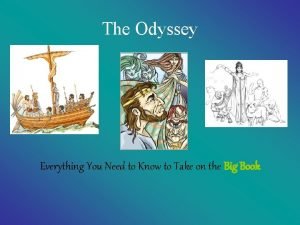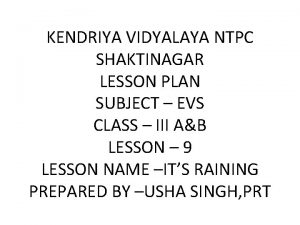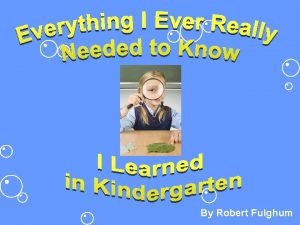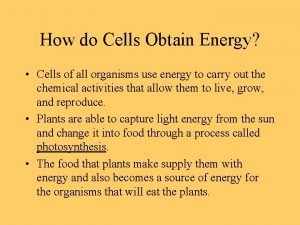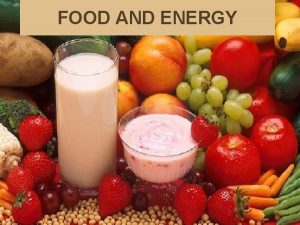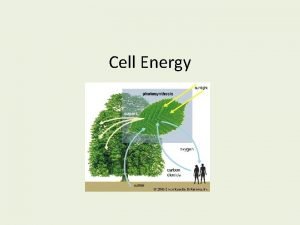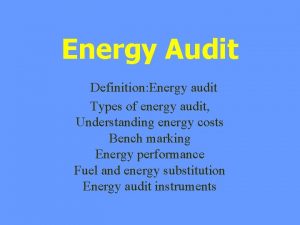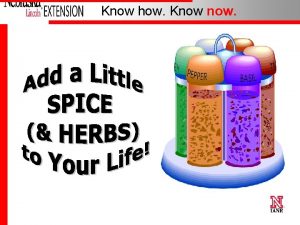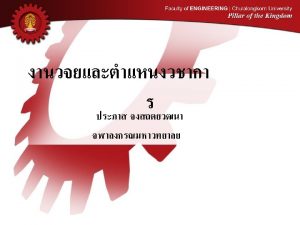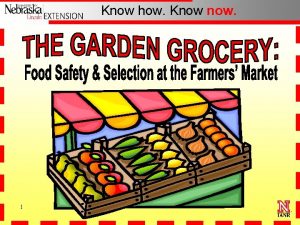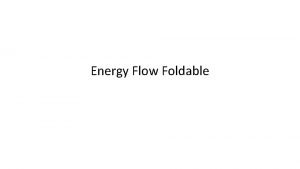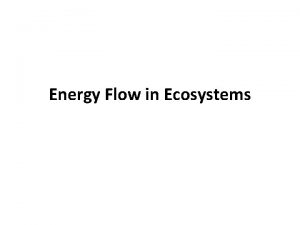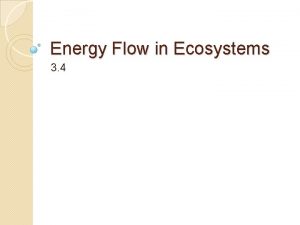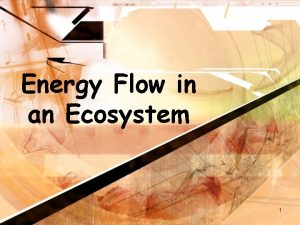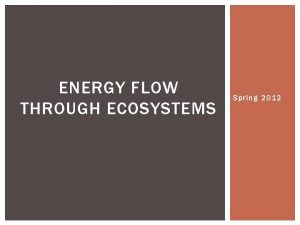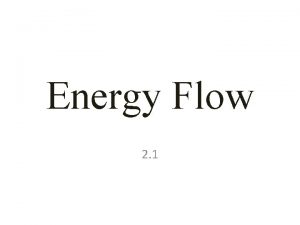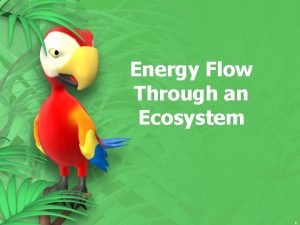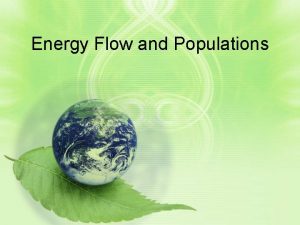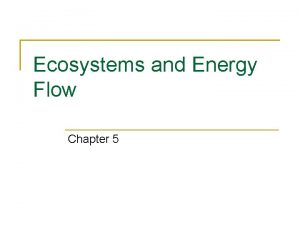1 4 6 Energy Flow Need to know

































- Slides: 33

1. 4. 6 Energy Flow

Need to know Name the sun as the primary source of energy. Name feeding as the pathway of energy flow. Present a grazing food chain. Present a food web. Construct a pyramid of numbers. 2

What is an ecosystem? a community of living organisms interacting with one another and their non-living environment within a particular area, e. g. woodland, etc. 3

Energy Flow Ecosystems are unable to function unless there is a constant input of energy from an external source. Where does this energy come from? The Sun 4

The Sun The sun is the primary source of energy for our planet. 5

Energy Flow is the pathway of energy transfer from one organism to the next in an ecosystem due to feeding, e. g. along a food chain Feeding allows energy to flow from one organism to another in an ecosystem. 6

Energy flow in the ecosystem 7

Food Chain Is a flow diagram that begins with a plant and shows how food/energy is passed through a series of organisms in a community. Each organism feeds on the one before it. A food chain ends when there is not enough energy to support another organism. An example of a food chain: grass rabbit fox. 8

Learning check What is meant by primary source? Main source What is the primary source of energy? The sun 9

A Grazing food chain is one where the initial plant is living e. g. Grass grasshoppers frogs hawks Honeysuckle aphids ladybirds thrushes Seaweed winkles crabs herring gulls Phytoplankton zooplankton copepod herring 10

Grazing Food Chains 11

A Detritus food chain is one where the chain begins with dead organic matter and animal waste (detritus) e. g. Detritus edible crab seagull Fallen leaves earthworms blackbirds hawks 12

Detritus Food Chain 13

Food Web This is a chart showing all the feeding connections in the habitat/ecosystem. Constructed by showing the links between all the interconnecting food chains in the habitat. 14

Food Web the interconnected food chains in an ecosystem e. g. 15

Learning check Energy flow/transfer through an ecosystem is achieved by … Feeding 16

A woodland food web 17 Construct a two food chains (4 ‘links’) from the above food web

Another food web 18 What is the longest food chain you can construct from this food web?

Learning check What is meant by a Grazing food chain? • is a food chain where the initial plant is living Give an example 1. 2. 3. 4. Grass grasshoppers frogs hawks Honeysuckle aphids ladybirds thrushes Seaweed winkles crabs herring gulls Phytoplankton zooplankton copepod herring 19

20

Producers are organisms capable of making their own food by photosynthesis, e. g. green plants. Primary producers are the first members of a food chain 21

Consumers are organisms that feed on other organisms. They cannot make their own food. There are three types: • Primary consumers – feed on producers • Secondary consumers – feed on primary consumers • Tertiary consumers – feed on secondary consumers 22

Woodland food chain Honeysuckle aphids ladybirds thrushes Producer Primary consumer Secondary consumer Tertiary consumer 23

Learning check Construct a simple food web Two food chains e. g. Plant caterpillar thrush fox Plant earthworm blackbird fox Combine them to form a food web Plant Caterpillar Thrush Earthworm Blackbird Fox 24

Trophic Level This refers to the position of an organism in a food chain. Plants are at the 1 st trophic level (T 1) and Herbivores occupy the 2 nd trophic level (T 2). Carnivores that eat herbivores are at the 3 rd trophic level (T 3). The 4 th trophic level (T 4) is often occupied by the top carnivore. 25

Trophic levels 26

Pyramid of Numbers A diagram that represents the numbers of organisms at each trophic level in a food chain. Bottom layer is the largest and represents a very large number of primary producers The next layer smaller and represents a smaller number of primary consumers The next layer – the no. of secondary consumers The uppermost layer where there may be only one tertiary consumer 27

Pyramid of Numbers 28

Learning check Explain the following terms: • Producer • organism capable of making its own food by photosynthesis • Consumer • organism that feeds on other organisms – cannot make their own food • Primary Consumer • organism that feeds on producers • Secondary Consumer • organism that feeds on primary consumers • Tertiary Consumer • organism that feeds on secondary consumers 29

To construct a pyramid of numbers 1. Count the primary producers and place them at the base of the pyramid 2. Count each consumer and include them according to their status (primary or secondary consumer) in the pyramid 3. The apex of the pyramid should include tertiary or top carnivores 4. Draw the pyramid so that the area/volume of each level is proportional to the number 30 of organisms found

Learning check What is meant by trophic level? This refers to the position of an organism in a food chain. T 1 = 1 st trophic level = Plants T 2 = 2 nd trophic level = Herbivores T 3 = 3 rd trophic level = Carnivores T 4 = 4 th trophic level = (T 4) Top Carnivore. 31

Learning check Construct a pyramid of numbers and explain its use. Construct: 1. … 2. … 3. … 4. … Use: attempts to show the energy structure of an ecosystem as a chart by counting the number of individuals at each trophic level 32

END 33
 Energy naturally flows from warmer matter to cooler matter.
Energy naturally flows from warmer matter to cooler matter. Flow of energy vs flow of matter
Flow of energy vs flow of matter Everything you need to know about the odyssey
Everything you need to know about the odyssey Five things we need to know about technological change
Five things we need to know about technological change My dentist says i need a crown i know right
My dentist says i need a crown i know right It's raining evs class 3
It's raining evs class 3 Need to know basis
Need to know basis The lady and the spider by robert fulghum
The lady and the spider by robert fulghum Know history know self
Know history know self Normalizing flow
Normalizing flow I know who goes before me
I know who goes before me Energy energy transfer and general energy analysis
Energy energy transfer and general energy analysis Energy energy transfer and general energy analysis
Energy energy transfer and general energy analysis How do cells obtain the energy they need
How do cells obtain the energy they need Need food and energy
Need food and energy Why do cells need energy
Why do cells need energy Energy audit definition
Energy audit definition How do you know if something has energy
How do you know if something has energy Reservoir nasal cannula
Reservoir nasal cannula High flow versus low flow oxygen
High flow versus low flow oxygen Venturi mask 50 percent
Venturi mask 50 percent What is laminar and turbulent flow
What is laminar and turbulent flow External flow
External flow Dfd to structure chart
Dfd to structure chart Data flow structure
Data flow structure Examples of rotational and irrotational flow
Examples of rotational and irrotational flow Internal versus external flow
Internal versus external flow Data flow vs control flow
Data flow vs control flow Cheese making process flowchart
Cheese making process flowchart Control flow and data flow computers
Control flow and data flow computers Transaction flow graph
Transaction flow graph Difference between conduction convection and radiation
Difference between conduction convection and radiation Usuf thermodynamics
Usuf thermodynamics Steady flow energy equation
Steady flow energy equation


